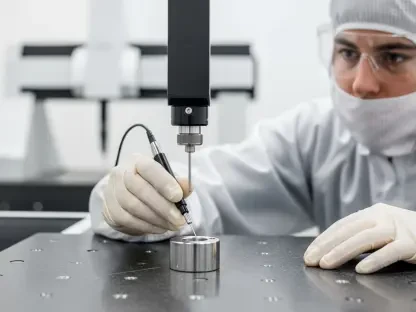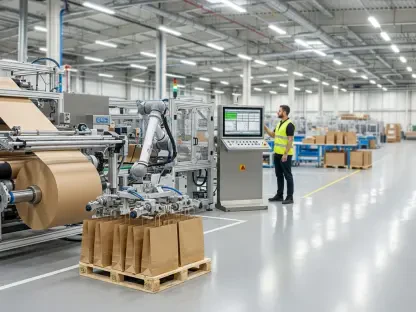In the ever-evolving landscape of digital manufacturing, Fictiv’s newly introduced Automated Design for Manufacturability (DFM) tool marks a significant leap forward. This cutting-edge innovation promises to streamline the injection molding process, reduce costs, and accelerate product development cycles. As the demands on manufacturing continue to grow and evolve, the necessity for automation and precision has never been more critical. By combining immediate, actionable feedback with advanced analytical capabilities, Fictiv is providing engineers with an invaluable resource to optimize designs before they even reach the production floor. This advancement is poised to reshape how companies approach injection molding, offering a blend of technological and human expertise that addresses many of the most common pain points in the industry.
The Need for Automation in Injection Molding
Injection molding remains a cornerstone of modern manufacturing, responsible for producing a wide array of plastic components used in various industries. However, this process is often plagued by repetitive revisions and costly testing phases that hinder efficiency and inflate costs. Traditional methods have long relied on manual analysis to identify design flaws, leading to production bottlenecks and delays. With the advent of digital solutions, there is a growing necessity for automation to meet the industry’s demand for speed and precision without sacrificing quality. Fictiv’s Automated DFM tool addresses these concerns head-on by providing immediate, actionable feedback, essentially placing powerful analytical capabilities directly in the hands of engineers.
By integrating automated insights with human expertise, Fictiv’s tool aims to curtail the typical cycles of revisions, testing, and mold validation that are intrinsic to the injection molding process. Engineers can use this tool to optimize their designs at the earliest stages, ensuring smoother and more efficient transitions from design to production. This not only helps to eliminate many of the common issues that can arise during the injection molding process but also significantly shortens the time-to-market for new products.
Core Features and Their Significance
One of the standout features of Fictiv’s Automated DFM tool is the Draft Review. This component uses a color-coded analysis to highlight draft angles, making necessary adjustments more intuitive and straightforward. Draft angles are crucial for smooth mold release, and any oversight can result in defects like warping or incomplete products. By visually identifying these issues early in the design phase, engineers can make quick corrections, ensuring a more reliable and efficient production process. This proactive approach minimizes the risk of defects associated with inadequate draft angles, fostering an overall more efficient molding operation.
Next, there’s the Thickness Review feature, which utilizes a heat map to effectively pinpoint areas with potential thickness-related problems such as sink marks or inconsistencies. These defects can compromise the structural integrity and appearance of the final product. By offering immediate feedback, the tool allows engineers to take prompt remedial measures, thereby ensuring that the final product meets all necessary quality standards. This capability is particularly valuable in preventing issues that might otherwise go unnoticed until the later stages of production, saving both time and resources.
Another essential feature is the Undercut Analysis, designed to address the complexities involved in molding parts with undercuts. These features often require secondary tooling motions, adding layers of complexity to the manufacturing process. The Undercut Analysis provides a graphical representation to simplify planning, enabling more precise design decisions that ease the manufacturing process. This tool helps engineers anticipate and accommodate complex mold features, simplifying the overall production process and reducing the risks of encountering unforeseen issues during manufacturing.
Strategizing with Parting Line Projection
The Parting Line Projection feature is another critical component of Fictiv’s Automated DFM tool, equipping engineers with an early assessment of parting lines. These are the critical junctures where the mold separates, and accurate parting lines are fundamental for creating efficient molds and minimizing flash—a common defect where excess material forms along the parting lines. This feature employs a preliminary assessment of parting lines, providing engineers with the foresight needed to make informed and effective design decisions. By offering this level of proactive insight, the tool facilitates better planning and more streamlined operations throughout the injection molding process.
With accurate parting line projections, engineers can anticipate potential issues and make the necessary adjustments early in the design phase. This minimizes the likelihood of encountering defects and delays during production, ultimately resulting in a more efficient manufacturing cycle. By incorporating these advanced features, Fictiv’s tool ensures a robust and reliable manufacturing process from initial design through to final production. Engineers can work with greater confidence, knowing that potential issues have been identified and addressed long before they become costly problems.
Balancing Automation and Human Expertise
Fictiv’s Automated DFM tool stands as a stellar example of harmonizing automated technology with human expertise. While the tool’s automated features provide rapid and precise feedback, the final design decisions still rest with skilled engineers, ensuring that the nuanced understanding and experience that human experts bring to the table are not overshadowed by technological efficiency. This blend of automation and human oversight enhances the overall effectiveness of the tool, making it a powerful asset in the manufacturing process.
The synergy between rapid automated assessments and strategic human oversight highlights the tool’s unique capabilities. Engineers can focus on fine-tuning their designs, assured that the automated system has already flagged immediate concerns. This balanced approach not only streamlines the design validation process but also enhances the quality and reliability of the final product. By leveraging the strengths of both automated technology and human expertise, Fictiv’s DFM tool offers a comprehensive solution that addresses many of the challenges faced in modern injection molding.
Industry Implications and Competitive Advantages
The introduction of Fictiv’s Automated DFM tool also positions the company as a frontrunner in the digital manufacturing sector. By emphasizing automation, data-driven insights, and early-stage design optimization, this tool aligns with broader industry trends that aim for increased efficiency and reduced time-to-market. Adopting such advanced tools brings substantial competitive advantages, enabling companies to lower manufacturing costs by minimizing defects and delays. Faster product development cycles allow businesses to respond more swiftly to market demands, providing a crucial edge in a fiercely competitive landscape.
In an industry where timing and efficiency are critical, the ability to quickly iterate and optimize designs can make the difference between leading the competition and falling behind. Fictiv’s Automated DFM tool empowers manufacturers to meet stringent quality standards without inflating budgets, offering a scalable solution that can adapt to various industry requirements. This innovation represents a significant step forward in how companies approach injection molding, providing a roadmap for integrating automation and precision into their manufacturing workflows.
Responding to Modern Manufacturing Challenges
The manufacturing industry faces relentless pressure to enhance quality while curbing expenses. Automated DFM tools like Fictiv’s stand as a vital response to this challenge, enabling manufacturers to meet stringent quality standards without inflating budgets. In today’s fast-paced market, the ability to quickly iterate and optimize designs can make the difference between leading the competition and falling behind. Tools that integrate automation with expert oversight are indispensable for any company aiming to excel in product quality and development speed.
As modern manufacturing continues to evolve, the demand for more efficient and reliable processes will only grow. Fictiv’s Automated DFM tool addresses these evolving needs by offering a comprehensive solution that streamlines design and production workflows. By providing real-time, actionable insights, this tool helps manufacturers stay ahead of the curve, ensuring they can meet the industry’s increasing demands for speed, precision, and quality. In essence, it offers a new paradigm for how companies can approach the complex challenges of injection molding in the digital age.
A Glimpse into the Future
Fictiv’s Automated DFM tool has a standout feature called Draft Review, which uses color-coded analysis to highlight draft angles. This makes it easier to spot and correct necessary design elements, ensuring smooth mold release and preventing issues like warping or incomplete products. By identifying these problems early in the design phase, engineers can quickly fix them, resulting in a more reliable and efficient production process. This proactive method helps minimize defects related to poor draft angles, enhancing overall molding efficiency.
Another key feature is the Thickness Review, which uses a heat map to detect areas with potential problems like sink marks or inconsistencies. Such defects can affect the structural integrity and appearance of the final product. By providing immediate feedback, the tool lets engineers take swift corrective actions, ensuring the final product meets quality standards. This feature is crucial for preventing issues that might arise later in production, saving both time and resources.
Additionally, the Undercut Analysis tackles the complex challenges of molding parts with undercuts, which often require secondary tooling motions. This feature offers a graphical representation to simplify planning, aiding precise design decisions and easing manufacturing. It helps engineers foresee and manage complex mold features, smoothing the production process and reducing the risk of unexpected issues.









